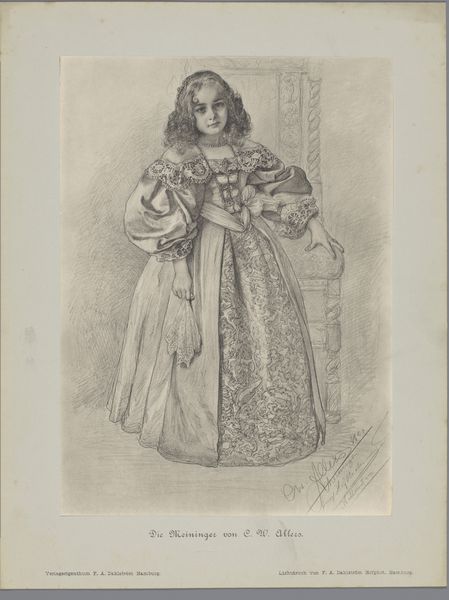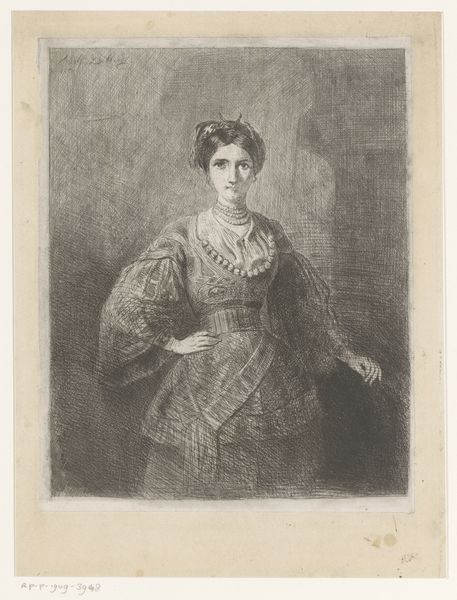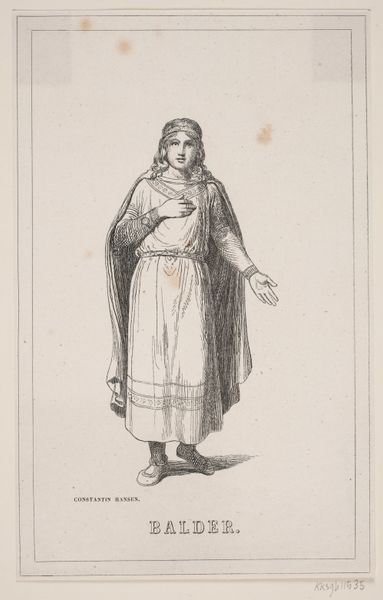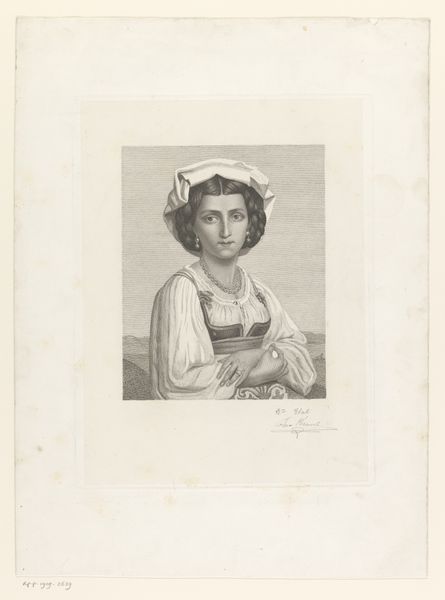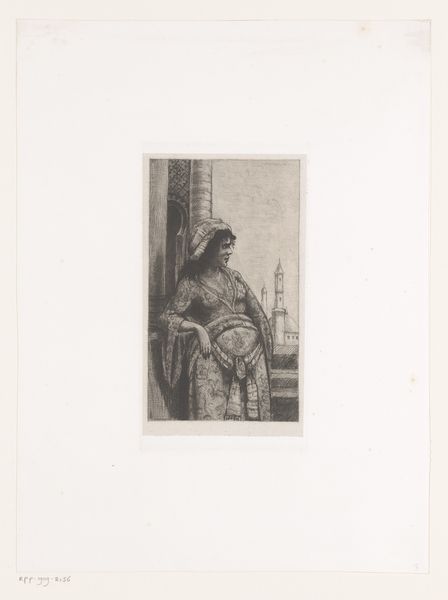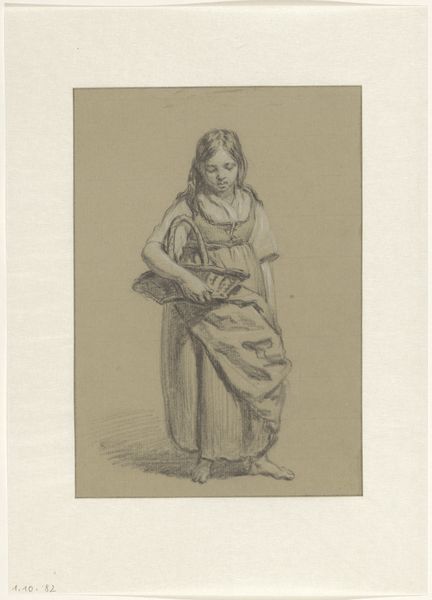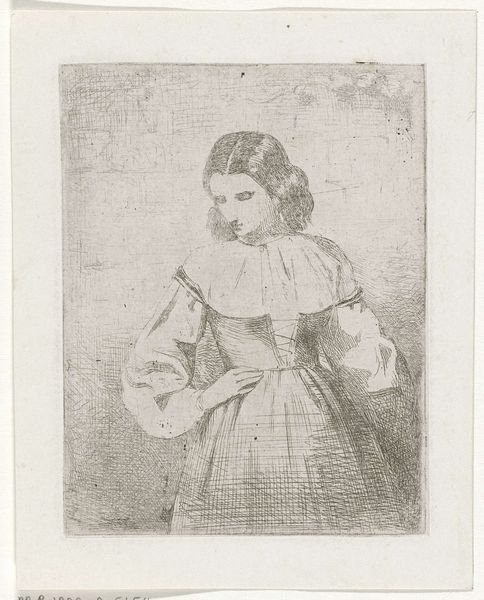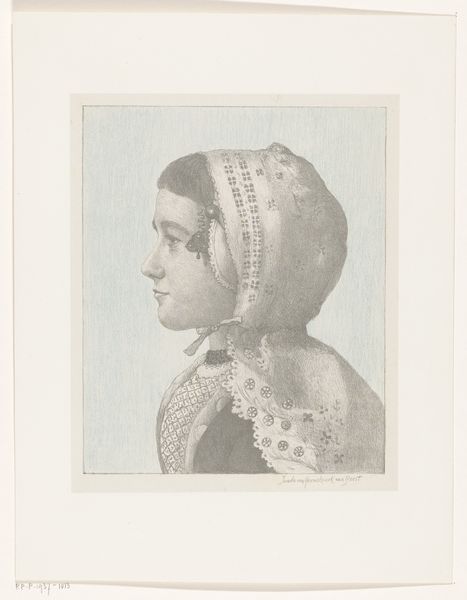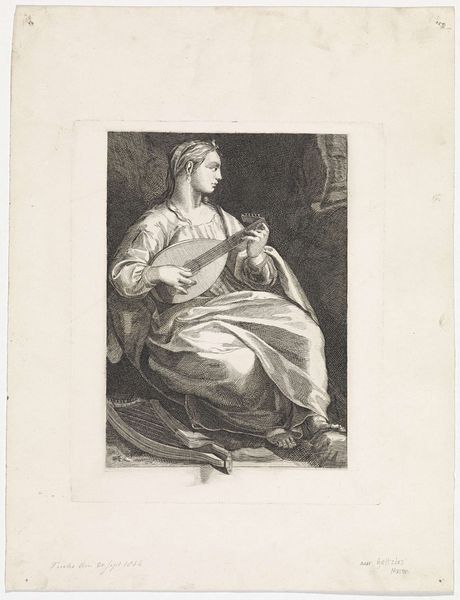
print, etching
#
portrait
# print
#
etching
#
figuration
#
realism
Dimensions: height 216 mm, width 162 mm
Copyright: Rijks Museum: Open Domain
This is Eugène Smits’s “Vrouw in klederdracht uit Sorrente,” a drypoint on paper. The drypoint process is all about mark-making. Smits used a sharp needle to scratch directly into the copper plate, creating a burr, a ridge of metal alongside each incised line. When printed, these burrs catch the ink, resulting in a velvety, soft line. Look at the woman's dress; notice the rich texture and subtle tonal variations, achieved through the density and direction of lines. The directness of drypoint lends itself to expressive, spontaneous work, although the plate wears down quickly, limiting the number of high-quality impressions. Smits work captures not only the likeness of the woman but also the texture and form of the fabric and details of the costume. The choice of drypoint speaks to a desire to emphasize the handmade quality of the print, connecting it to the skilled traditions of craft. It invites us to appreciate the labor and artistry involved in both the making of the clothing and the artwork itself.
Comments
No comments
Be the first to comment and join the conversation on the ultimate creative platform.

